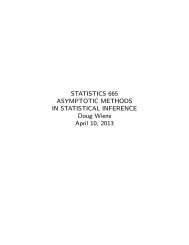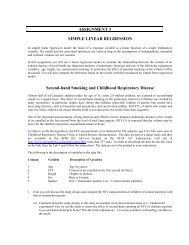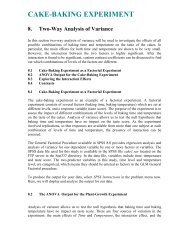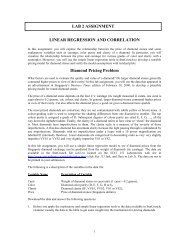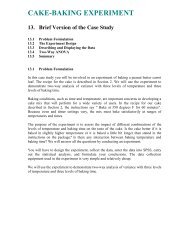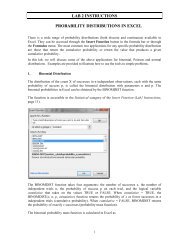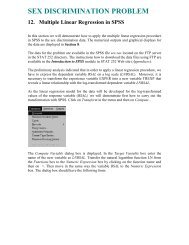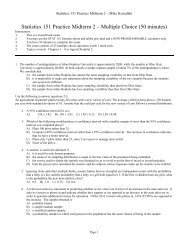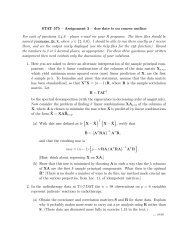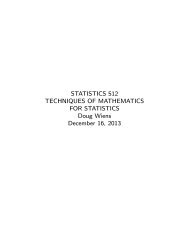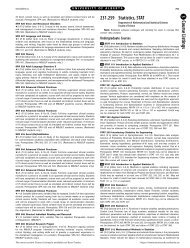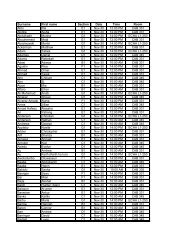Solutions
Solutions
Solutions
You also want an ePaper? Increase the reach of your titles
YUMPU automatically turns print PDFs into web optimized ePapers that Google loves.
15. The equation of the least-squares regression line is<br />
(a) Rate = 345.7019 + 21.46377*Mass<br />
(b) Rate = 296.4899 + 6.525444*Mass<br />
(c) Rate = 4.689608 + 38.23793*Mass<br />
(d) Rate = 45.76491 + 21.46377*Mass<br />
(e) Rate = 215.7019 + 21.46377*Mass<br />
16. A 95% confidence interval for the average change in the metabolic rate as the body mass increases<br />
by 1 kilogram is<br />
(a) [3.4523, 13.3526] (b) [4.6896, 38.2379]<br />
(d) [7.5375, 445.7649] (e) [8.3595, 45.7649]<br />
(c) [6.5254, 45.7649]<br />
17. The fraction of the variation in the values of metabolic rate that is explained by the regression of<br />
metabolic rate on lean body mass is<br />
(a) 53.27% (b) 59.43% (c) 62.50% (d) 68.39% (e) 82.70%<br />
DETAILED SOLUTIONS<br />
Question 1<br />
The binomial distribution with n=10 and p=0.20 is skewed to the right. Its mean is np=2. The most likely<br />
observed values of the distribution are small integer numbers, 0, 1, 2, the values very unlikely to appear are<br />
integer numbers close to 10. Thus the histograms C and D should be excluded. However, as the number of<br />
observations is large (100), we expect the right tail of the distribution not to be very long and the shape of<br />
the distribution resembling that of a normal distribution. Only the histogram B satisfies the condition. The<br />
answer (b) is correct.<br />
Question 2<br />
It is possible to use the Insert Function to obtain the values of all five statistics. You will find them all in<br />
Statistical category. It is also possible to use the Descriptive Statistics feature to produce the values of the<br />
first three statistics and to obtain the remaining two from the Insert Function feature.<br />
The correct values are:<br />
(a) The first quartile is 0<br />
(b) The second quartile is<br />
1<br />
(e) The third quartile is 2<br />
Question 3<br />
The probability displayed in the Binomial template is 0.3487.<br />
Question 4<br />
The value returned by the worksheet is 0.00135. The expected number of observations exceeding 3 in a<br />
random sample<br />
of 10,000 observations is 10,000*0.00135=13.5. The answer (b) is correct.



